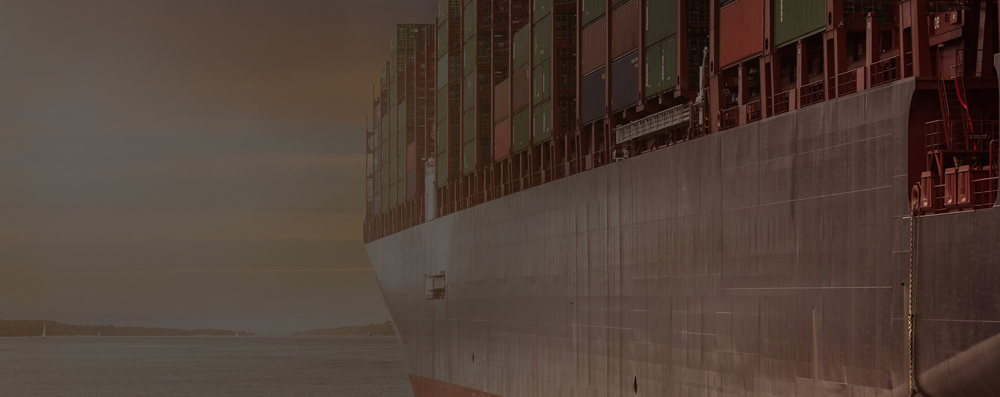
Blogs
The Big Question: Is the Red Sea crisis creating new risks for insurers?
With the US-UK coalition conducting more attacks on the infrastructure used by the Houthi Rebels to attack merchant vessels in the Red Sea, the ongoing crisis which has seen the world’s biggest shipping firms refusal to allow vessels to transit the area continues.
The coalition of countries which has been created to protect shipping issued a statement this week in which it highlights the ongoing threat.
“The Houthis’ now more than thirty attacks on international and commercial vessels since mid-November constitute an international challenge,” it stated. “Recognising the broad consensus of the international community, we again acted as part of a coalition of like-minded countries committed to upholding the rules-based order, protecting freedom of navigation and international commerce, and holding the Houthis accountable for their illegal and unjustifiable attacks on mariners and commercial shipping.
“Our aim remains to de-escalate tensions and restore stability in the Red Sea but let us reiterate our warning to Houthi leadership: we will not hesitate to defend lives and the free flow of commerce in one of the world’s most critical waterways in the face of continued threats.”
While the aim is to deliver stability, at present the situation remains volatile and given the proportion of global trade which transits the Suez Canal and uses the Red Sea to transport oil and gas across the world it is an ongoing concern for insurers and their clients. But for insurers the efforts to adapt to the threats and maintain global trade is creating new risks.
Ian Summers, Global Business Development Leader, AdvantageGo
Suki Basi, Managing Director of Russell Group says the escalating crisis in the Red Sea has created a range of new risks for insurers.
“The impact in global trade is already being felt,” he says. Russell Group say their research has put the level of global trade which will be put at risks in a lengthy period where the Red Sea and Suez Canal are effectively blocked at $3 trillion (£2.36 trillion).
Basi adds the effects are already being felt.
“Transits through the Red Sea represent around 12% of all world trade. Crude Oil, which makes up 17% of all annual trade through the Suez Canal and the Red Sea, at $496 billion (£391 billion) would be the largest commodity that would be impacted by a closing of all trade through the canal,” he explains. “The delivery of cars will be impacted, as an estimated $178 billion (£140 billion) worth of cars is imported through the Red Sea annually. Some car manufacturers such as Tesla have suspended production due to feared shortages from the Red Sea.”
Already there are warnings that the coming months will see supply issues for major retailers in Europe and Basi says with an estimated $105 billion (£82 billion) of clothing imported through the Red Sea annually stores are likely to feel the pinch.
“The biggest issue remains the additional time that vessels are taking to complete their voyages,” he explains. At present the journey times are taking between 10 to 12 days longer as vessels transit via the Cape of Good Hope.”
It means that some journeys are taking up to 57 days, which is adding the costs of the transits with those costs being reflected in the steep rises in freight rates.
“With extended voyage times there is likely io be rising accumulation risks at the world’s busiest ports as cargos are left waiting for the arrival of vessels for return journeys,” he says. “There is little doubt that the biggest ports will start to have growing queues of vessels looking to load and unload as the situation in the Red Sea continues.”
Basi says for those vessels still willing to risk the Red Sea insurance premiums have also soared and with it are coming increasing costs.
“The result of the steps being taken by cargo and ship owners to reduce the risks to seafarers and their vessels is rising costs and given that inflation is already a concern, they are looking at ways in which they can mitigate the impact.”
“The costs of insurance in the Red Sea have increased significantly and as such vessels are looking for new routes,” he continues. “Quite apart from the length of the journey times, there are also potential piracy risks on part of the longer route. As the maritime industry looks to reduce its carbon footprint the extended journey times also increase emission levels and the likelihood is that this may run the danger of regulatory risks if the situation in the Red Sea continues for a lengthy period.”
Basi says recent months have seen the creation of alternative route options to circumvent the Red Sea over and above the lengthy journey around the Cape of Good Hope.
The rail network along the “Silk Road” from China to Western Europe has seen a significant uptick in use and Basi believes that the growth seen in the past 12 months is likely to continue.
“The situation in the Red Sea has focused more attention on the Silk Road Initiative,” he says. “The journey time from China to Western Europe via the route is between 16 to 18 days using the rail system. Given the journey times via the sea routes at present it is an attractive option, but there is a cost implication that needs to be considered.
“Our data shows that last year the number of containers transported via the Silk Road went up from 1.5 million in 2022 to 1.75 million, which is an increase of 20%,” he explains. “There has also been a 7% rise in the number of trains operating on the route with 16,000 journeys between January and November last year alone.”
Basi says cargos are also being shipped to Saudi Arabia, and Dubai where they are then moved by train to Egypt from where they can complete their journey by sea. However, the routes come at an increased cost and create new risks as businesses look for alternatives.
“These hybrid transit routes are likely to become more popular as the attacks continue,” he adds. “It has created a new complexity for insurers and these alternative route options come with new risks.
Basi says it is not only the Red Sea and the Suez Canal which is testing the world’s ability to move goods across the world.
“Let’s not forget that the Red Sea crisis is not a single isolated event impacting global trade. There is a crisis brewing in the Panama Canal due to a shortage of water. Potentially, two of the world’s crucial shipping lanes may be at risk of being closed off or seeing a large fall in volume for some considerable time.
“What these events demonstrate time and time again, is that such threats are connected, and their combined ripple effect is having a significant impact on the global economy, requiring forward looking insights and analysis.”




